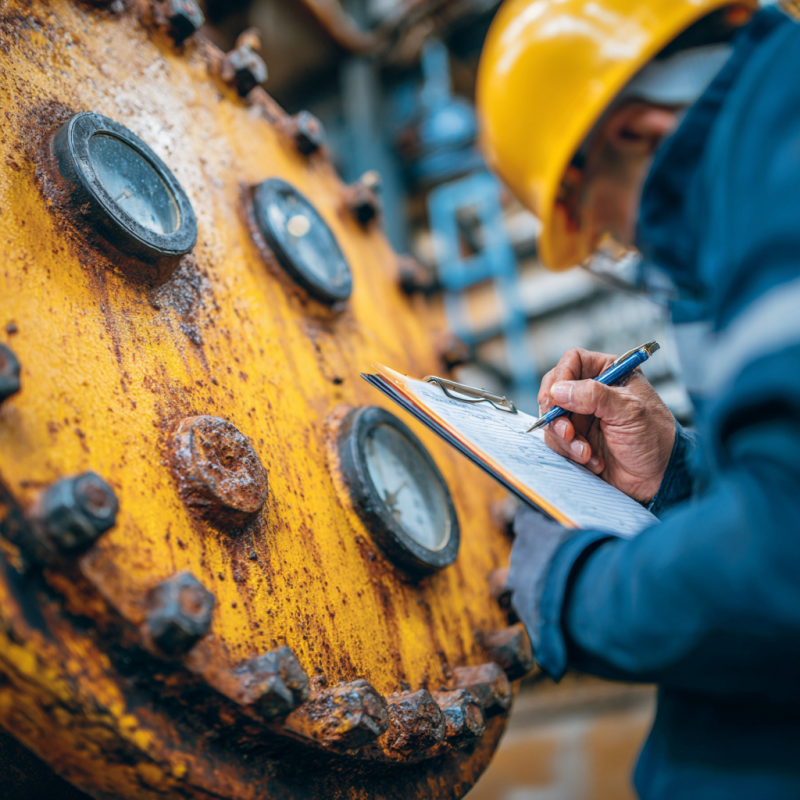
What Are Pressure Vessel Safety Standards? Compliance and Safety
Understanding What Are Pressure Vessel Safety Standards
Pressure vessels are critical components in many industries, including oil and gas, power generation, and chemical processing. Ensuring the safety and reliability of these vessels is essential to prevent catastrophic failures that could lead to severe consequences, including damage to property, injury, or even loss of life. In this blog, we will explore what are pressure vessel safety standards and why compliance is so crucial.
Pressure vessel safety standards are a set of guidelines that govern the design, construction, inspection, testing, and maintenance of pressure vessels. These standards are designed to ensure that pressure vessels operate safely under various operating conditions, preventing accidents and failures. Following these safety standards helps to maintain the structural integrity of the vessel and minimizes the risk of leaks, ruptures, or explosions. Learn more about our pressure vessel services.
The Importance of Pressure Vessel Safety Standards
Pressure vessels operate under extreme conditions, including high pressure and temperature, which can cause failure if not properly designed, maintained, and inspected. As such, what are pressure vessel safety standards directly relate to the level of safety that can be achieved with these systems. Regulatory bodies like the American Society of Mechanical Engineers (ASME) and the Occupational Safety and Health Administration (OSHA) set these standards to ensure public and workplace safety.
Without these safety regulations, industries that rely on pressure vessels would face increased risks of accidents. Compliance with pressure vessel safety standards is essential not only for meeting legal and regulatory requirements but also for protecting employees, equipment, and the environment. For more about our safety protocols, visit our site.
Key Components of Pressure Vessel Safety Standards
Several key components play a role in ensuring the safe operation of pressure vessels. These standards address everything from the materials used in fabrication to the design and testing processes. Below are the main elements covered by pressure vessel safety standards:
Material Selection: The materials used in the fabrication of pressure vessels must be able to withstand high pressure and temperature without failing. The standards specify the types of materials that can be used and their strength requirements.
Design Requirements: Pressure vessel design must account for the operating conditions, such as pressure, temperature, and the type of fluid contained within. What are pressure vessel safety standards ensures that all vessels are properly designed to handle these conditions, preventing failures.
Inspection and Testing: Regular inspections and testing are mandatory to detect potential issues before they result in catastrophic failure. These inspections include visual checks, pressure tests, and non-destructive testing (NDT) methods like ultrasonic or radiographic testing. Learn more about our inspection processes.
Fabrication and Construction: The fabrication process must adhere to strict welding and assembly standards to ensure the structural integrity of the pressure vessel. The welding materials, techniques, and post-weld heat treatment must comply with ASME or other recognized standards.
Maintenance and Repair: Routine maintenance and timely repairs are essential to extend the life of pressure vessels. Maintenance practices must follow industry standards, and any repairs made to the vessel must be inspected and tested to ensure compliance with safety guidelines.
Pressure Relief Devices: Pressure relief devices such as safety valves must be installed to prevent over-pressurization. These devices are designed to release pressure safely if the vessel exceeds the specified pressure limits.
Regulatory Bodies and Pressure Vessel Safety
Pressure vessel safety standards are enforced by several regulatory bodies. The most widely recognized are the ASME Boiler and Pressure Vessel Code and the American Petroleum Institute (API) standards. These organizations provide comprehensive guidelines for the design, operation, and maintenance of pressure vessels. They also offer certification programs to ensure that manufacturers and inspectors meet the required safety standards.
The ASME BPVC (Boiler and Pressure Vessel Code), in particular, outlines the rules and guidelines for the design, materials, fabrication, examination, testing, and certification of pressure vessels. Compliance with the ASME BPVC is often a legal requirement in various industries that use pressure vessels.
What Are Pressure Vessel Safety Standards for Inspection?
The frequency and type of inspection required for pressure vessels depend on factors such as the type of vessel, its age, and the service conditions it operates under. What are pressure vessel safety standards for inspection is a critical aspect of ensuring long-term safe operation. Inspections should be performed at regular intervals, and vessels should undergo a detailed inspection if there are signs of wear, corrosion, or potential leaks.
Typically, pressure vessels are required to undergo an initial inspection and then follow a regular inspection schedule. Some vessels may also require additional testing, such as pressure tests or non-destructive testing, depending on their operating environment. Regular inspections help identify issues early, preventing accidents and extending the lifespan of the vessel. Explore more on our pressure vessel inspection procedures.
Pressure Vessel Safety Standards in Practice
In practice, what are pressure vessel safety standards guide how pressure vessels are maintained throughout their service life. These standards influence the procedures for operation, inspection, and repair. For example, a pressure vessel used in the chemical industry might require different safety standards than one used in a power plant. Compliance with these standards ensures that vessels are safe to operate and that all personnel are protected from potential hazards.
What Are Pressure Vessel Safety Standards for Fabrication?
The fabrication of pressure vessels must adhere to strict quality control measures to ensure that the vessel is capable of handling the specified pressure and temperature conditions. What are pressure vessel safety standards for fabrication focus on the integrity of the materials used, the welding process, and the overall design. Manufacturers are required to adhere to these standards to ensure the safety and reliability of their products.
Properly adhering to these standards helps minimize the risk of defects in pressure vessels, reducing the likelihood of failures that could result in significant damage or injury. Learn more about our fabrication services.
What are Pressure Vessel Safety Standards
What are pressure vessel safety standards is a fundamental question that every manufacturer, engineer, and operator should consider. These safety standards ensure that pressure vessels are properly designed, fabricated, maintained, and inspected to prevent catastrophic failures. By adhering to these standards, industries can ensure the safety of their workers and the surrounding environment, while also maintaining the reliability and efficiency of their equipment.
At Red River, we understand the importance of adhering to these standards in the fabrication and inspection of pressure vessels. Our team is committed to ensuring compliance with all relevant safety standards, providing you with peace of mind knowing your equipment is built to last. Explore our pressure vessel fabrication services to learn how we can help ensure your vessels meet the highest safety standards.
Need a reliable partner?
Red River specializes in the design and manufacturing of pressure vessels. We also fabricate related items such as prefabricated spools and skid packages.
Reach out to us today and experience the Red River difference. Where American-made products and American Values come together, we care more.
Frequently Asked Questions
1. What is pressure vessel safety?
Pressure vessel safety refers to the measures taken to ensure that pressure vessels are designed, constructed, maintained, and operated safely to prevent accidents such as explosions or leaks. Learn more about our pressure vessel services.
2. What is Pressure Vessel Inspections?
Pressure vessel inspections are routine checks that assess the structural integrity and functionality of pressure vessels to ensure that they meet safety standards. Find out more about our inspection processes.
3. What are Pressure Vessel Safety Standards?
These standards define the requirements for the safe design, manufacture, testing, and inspection of pressure vessels to prevent accidents. Explore more about our safety protocols.
4. Why are pressure vessel safety standards important?
They ensure that pressure vessels operate within the required safety margins to prevent failures, protecting both workers and the surrounding environment.
5. How often should pressure vessels be inspected?
The frequency of inspections depends on the vessel’s type, age, and operating conditions, but they should be checked regularly to ensure safety.
Key Takeaways
- Pressure vessel safety standards are crucial for ensuring the safe design, operation, and maintenance of pressure vessels.
- Compliance with ASME and other regulatory standards is required to prevent failures and accidents.
- Regular inspections and proper maintenance are vital to extending the life of pressure vessels.
- Manufacturers must follow strict safety standards during the fabrication process to ensure the vessel’s integrity.
